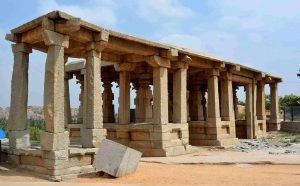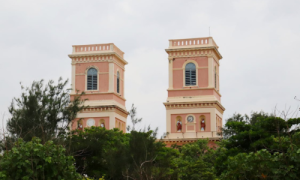 After breakfast start tour of Hampi.
After breakfast start tour of Hampi.
The 15th century Chandramouleshwara Temple is a 900 years old temple boasting of an ancient south Indian temple architecture. The temple is devoted to Lord Shiva and houses two Shiv Lingas. The walls and pillars of the temple are well adorned with sculptures. The temple has pillars that were built in black granite and dancing figures of
Ganesha. This temple is a fine example of Chalukyan temple architecture.
As the epicenter of Hampi’s attractions, Vittala Temple is the most brilliant architectural masterpiece of Hampi. The temple is named after Vittala, a form of lord Vishnu. It’s considered to be one of the largest and the most famous structure in Hampi. The highlight of the temple is its impressive pillared halls and the stone chariot. The Stone Chariot is actually a shrine that has been given the shape of a chariot and has been decorated with ornamental carvings.
Also visit Virupaksha Temple, the main center of attraction in the city. Towering 160 feet high, the temple is dedicated to Lord Shiva. Situated on the bank of Tungabadra, it is one of the oldest and most prominent temples of Hampi. Since its inception in the 7th century, sprawling complex houses many sub shrines, pillared halls, flag poles, lamp poles, soaring gateways and even a huge temple kitchen.In this south india tours this temple is the one of best place.
Lotus Mahal is one of the prominent architecture in Hampi. The style of architecture is departure to the typical style of architecture followed in Hampi. The structure is made of Lime mortar and brick. The archways and the balcony with the domed construction looks like a half opened lotus bud. The center dome is also carved in open lotus bud shape. The night lighting is a remarkable sight. Indeed, this is a very picturesque and one of the most photographed buildings at Hampi.
Sule Bazaar is a deserted temple street. It is located at the base of the Matanga Hill and in front of the beautiful Tiruvengalanatha Temple, also recognized as Achyuta Raya’s Temple. Lined with number of exquisitely carved pillars was one of the liveliest streets during the Vijaynagar Empire.
Constructed in 1534 AD, Achyutaraya Temple was built by a high officer in Achyuta Raya’s court. Therefore the temple was named after him. The temple is dedicated to Lord Tiruvengalanatha, a form of Lord Vishnu. The temple is one of the finest examples of the Vijaynagara style of architecture. The main shrine is situated at the center of two rectangular courtyards. The inner sides of both the courtyard walls are fringed with pillared verandah. The outer verandahs are mostly in ruins with the pillars scattered randomly along the wall base. This was one of the last grandiose temple projects executed in the capital, before the collapse of the empire.
Next we visit Queen’s Bath. For some mysterious reasons its called the Queen’s Bath but in all probability it was a royal pleasure complex for the king and his wives. The building is made with a veranda around facing a big open pond at the middle. It is believed that once fragrant flowers and perfumed water filled the open to sky bathing pool, which is now empty. The building has a crude design that prevents any intruders from walking into the place where the royal women take their bath. The Queen’s bath will make you envious that the modern day spas and tubs are nothing in comparison to the lavish baths used in the past.
Elephant Stables are among the few structures that were destroyed. This long building is rowed with domed chambers which were used to park the royal elephants. There are 11 tall chambers and some of them are interconnected. The five towers of the building represent the Islamic style of architecture. The central building is adorned beautifully and is big in comparison to any other chamber.
Return to Hospet for overnight stay.

 After breakfast drive to Pondicherry. Arrive and check in at hotel.
After breakfast drive to Pondicherry. Arrive and check in at hotel. After breakfast start tour of Hampi.
After breakfast start tour of Hampi.


